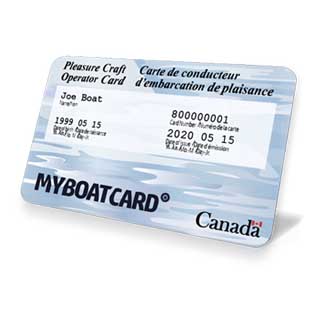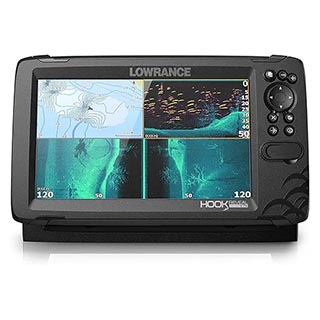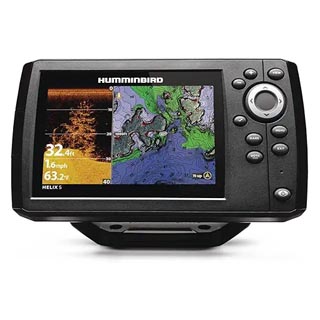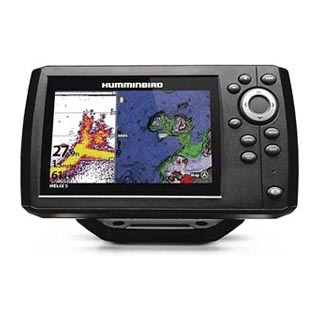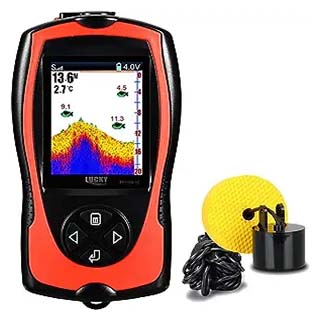Not Just Fishing's Fish Finders
Bottom Bouncing For Walleyes

Bottom Bouncing For Walleyes
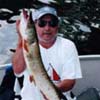
Why would anyone want to bottom bounce for walleyes?
If you want to spend more time trolling for walleye
and at the same time learn what is at the bottom of the lakes you spend so much time on then bottom bouncing is the
key.
Here are some of the benefits of bottom bouncing.
- Reduces your time in locating walleye.
- Makes you a better fisherperson.
- You become more informed about walleye habits.
- Trolling covers large areas in a minimal amount of time. You find them, they don't find you.
- Once your prey has been found you can spend all your effort at that depth and structure.
What equipment will you need?
I recommend a 6 to 7ft. medium, heavy bait casting rod and a medium sized
bait casting reel with 100 yards of twelve pound test line. I would also recommend a fish finder and an electric
trolling motor.
What does a bottom bouncer rig look like?
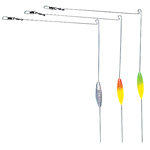 The bottom bouncer is shaped like a 7 with a weight on the vertical "leg" about halfway up. This leg is
12 in. long and keeps your trolled rig six to 12 inches off the bottom.
The bottom bouncer is shaped like a 7 with a weight on the vertical "leg" about halfway up. This leg is
12 in. long and keeps your trolled rig six to 12 inches off the bottom.
How do you troll with a bottom
bouncer?
In order to stay on the bottom you'll need 1oz. of weight for every 10ft. and you're
trolling speed will be 1/2 to 3 mph.
Tip:
You can make a bottom bouncer from a clothes hanger and
a rubber core sinker.
(2) Cover and Structure
The combination of cover and structure
often produces the biggest walleyes. The closer you can get to that heavy structure and cover, the bigger fish
you're going to catch. With the Lindy NO-SNAGG Fishing System, you can fish in places where walleyes have
never seen a bait before. That gives you a good chance of getting that fish to bite and bringing him to the boat.
(3) Windy Days
Windy days and walleye fishing go together hand in hand.
Walleye are a light
sensitive fish and wind helps create waves which scatter the light and stir up the bottom. The result is dark water
which walleye love to feed in. The wind stacks up water along the shoreline trapping baitfish. It also creates
currents in narrows and flushes baitfish thru cracks. All in all its primetime for a walleye
feeding frenzy.
(4) Bait
Walleye's preference in baits are minnows, nightcrawlers
and leeches so you might want to start with these before trying your favourite lures.
Jigs are a all round
walleye lure. Ideal for catching plenty of big fish. Use them early in the season and any time there is a group in
a small area close to the bottom or around islolated structures.
In the summertime, walleyes tend to spread
out along rock structure, shorelines or reefs.
They aren't hanging out in predictable places like cups
and tips but are dispersed along the whole structure. Trolling a Storm Deep Thunderstick DTS09 (formally known as
the Deep Jr. Thunderstick) over structure in water 20 feet deep or less is a great way
to catch these scattered fish.
(5) Location
Ok, you get to the lake, so just where do you start?
Head toward a structure such as a river, a large point, a waterfall, etc. and while your on your way, troll it.
Once you have arrived try your jigging or live bait rigging.
When you find fish, take note of the depth
because you can expect them to be at this depth thru out the lake.
Search out the warmest part of the lake
in the spring time, your odds are definitely higher for locating pickerel.
(6) Using Solunar Tables
Over the centuries deep-thinking anglers have developed a variety of methods for predicting
when the best fishing will occur.
One of the most popular is the solunar tables, which uses the position of
the sun and the moon in relation to earth in order to predict the time of day when fish are most likely to be
active. The tables provide major and minor movement periods for the am and pm hours.
(7) Fish Batter
Normally, I catch my fair share of fish. My dilemma is size or lack of and so I
practice catch and release. However, every once in a while something will go wrong and I'll catch enough fish
of a decent size to make a meal.
Although it was a little confusing for me at first, I eventually caught on to
how to fillet them and then they were ready for the batter. Batter can make or break the tastiness of the fish, so
you better choose wisely.
(8) Techniques
Vertical Jigging
If the walleye are in
15+ feet of water, consider vertical-jigging. Put your boat directly above the structure or a spot. Then lower your
spoon or jig to the depth that fish are suspended or just slightly above, then, begin jigging
your rod tip up and down between 6" and 24".
The trick here is to lower the rod tip just fast
enough so that the lure falls freely with no slack forming in the line. Often the strike will come on the drop and
if you have too much slack in the line, you won't be able to detect the hit or set your hook quickly enough.
A variety of lures will work well for vertical-jigging, but some of the best are jigs and spoons. If
you're not getting much action, try dressing it with a pork-rind, a soft-plastic curlytail or a worm or live
minnow.
By Iain Loveman
Fishing Article Of Interest: Life Cycle And Habits Of Walleye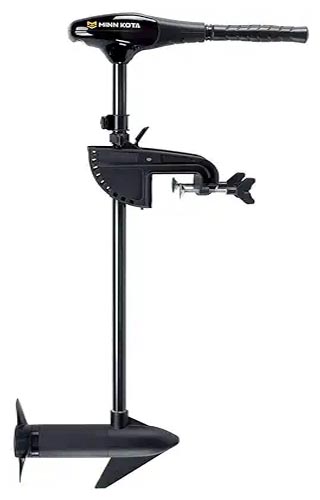
If the Endura™ name looks familiar, it's because you've seen it on thousands of transoms over the years.
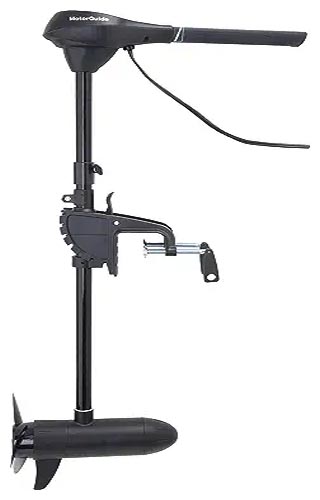
The Motorguide Transom Mount Trolling Motor is a tough aluminum 7 position mount which gives you greater flexibility and adaptability
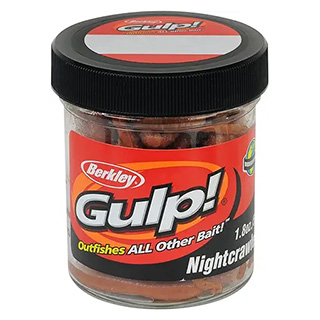
These extruded nightcrawlers have similar look and feel of live bait. They can be dangled from floats, rigged like plastic worms or any other way you fish nightcrawlers.
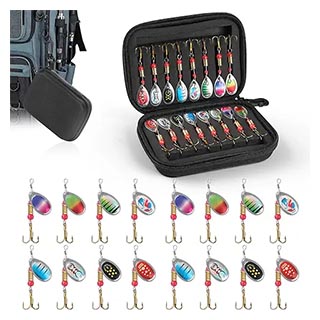
The spinner baits are made of high-quality material, sturdy fishing spinners and artificial colors, greatly attract the fishes in the lake sea and ponds.
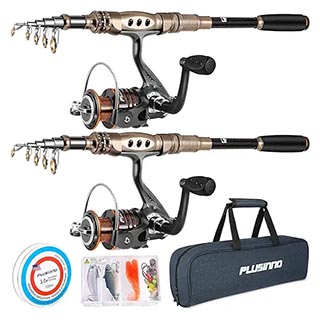
PLUSINNO Fishing Rod and Reel Combos Carbon Fiber Telescopic Fishing Pole
